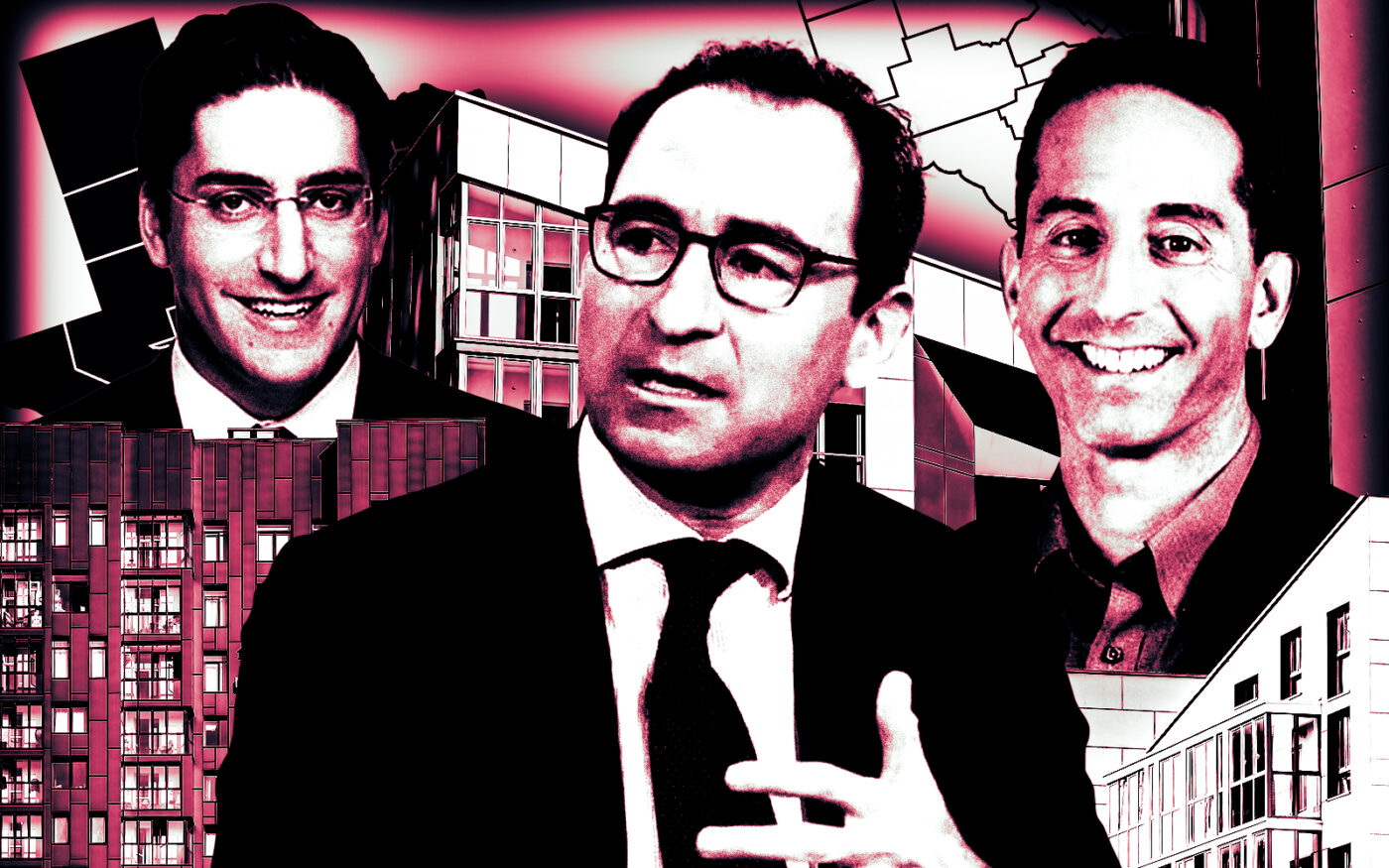Like Babe Ruth calling his shot, KKR took a moment to let the world know it was about to swing for the fences. In April, the investment giant released a report titled “When Fear is a Friend,” in which it made the bull case for American multifamily.
After years of meatballs straight over the plate, the pitcher had thrown a curveball. Debt levels were high for multifamily owners, and their loans were coming due. At the same time, building values were falling below their acquisition prices and supply was booming. Owners needed to refinance their debts, but high interest rates refused to budge.
The long-term play still made sense. Particularly in cities like Dallas and Austin, populations were growing, and rents were expected to rise again once the short-term wave of new supply tapered off around 2026.
But the problems were pronounced in Texas. No city had more apartments coming online as a percentage of total supply than Austin. Meanwhile, the city’s rent prices and occupancy rates trended down harder than in any other major city.
In theory, then, owners across Texas were going to feel intense pressure to sell valuable assets for a song, largely due to short-term issues. But few investors have the combination of scale, market knowledge and easy access to capital to weather the short-term trouble.
Big players are pouring billions into what they see as a multifamily market that has bottomed out. The Texas growth story that lured record apartment development still holds, even as a temporary dislocation in lending and sales has pushed many previously busy players off stage for now. Smaller investors have yet to return en masse, but that doesn’t mean the market is dead. The average Joe can’t hit a major league curveball, but Babe Ruth can knock it out of the park.
Two months after releasing the report, KKR purchased a portfolio of 18 recently constructed apartments from Lennar’s Quarterra for $2.1 billion. In one swing of the bat, KKR swept up 5,200 units in markets from California to Texas to New Jersey.
“We believe this is a great moment to invest in real estate, as transaction activity starts to pick up on the heels of two years of dislocation in commercial real estate markets,” Justin Pattner, KKR’s head of real estate equity, said in a news release.
After a long pause in multifamily transactions, particularly in Texas, some of the industry’s biggest players were ready to start trading again.
In its first quarter earnings call, Blackstone CEO Jonathan Gray likened this era to the aftermath of the Great Recession, when Blackstone called bottom and started spending while others waited.
“Real estate values bottomed in that summer of 2009, but you had negative headlines in real estate for the next three years. We spent a lot of that time deploying capital into that dislocated period where people were still cautious,” Gray said. While he was speaking more broadly about commercial real estate, Gray later spoke specifically to the opportunity he sees in multifamily.
“We have seen in multifamily a 50 percent decline from peak starts. That starts to lay the groundwork,” he said. “I would think about this period of time as a time of seed-planting, that you want to be investing into this dislocation. Because there’s a lot of uncertainty, there may be forced sellers, there may be public companies trading at discounts.”
Shortly after this year’s second quarter ended, Blackstone took Apartment Income REIT private for about $10 billion.
Not to be outdone, Brookfield took its own big swing, purchasing a 7,300-unit portfolio from Starwood for $1.55 billion, or $212,000 a door. The deal included five Texas Properties with 1,508 apartments.
Heavyweights see opportunity in multifamily, and are using their huge advantage in cash reserves, favorable financing and scale to act before smaller players can get in. Based on their public statements, they’re just getting started.
“We are hoping to do at least another $300 million or so of acquisitions before the end of the year,” Matthew Birenbaum, chief investment officer at multifamily real estate investment trust AvalonBay said at his company’s latest earnings call. “We could certainly do more.”
“Scaled players will see opportunities first and have the freedom to deploy without much leverage,” KKR’s report concludes. “The once-in-a-decade opportunity for real estate equity investors is complex, but also exciting. It’s time to start thinking of fear as a friend.”
The playing field
They can’t all be multi-billion-dollar private equity companies. Giant firms dealing in massive portfolios operate on different terms than the average buyer, and can often access different forms of financing on better terms.
“We’re talking about some of the most sophisticated people in this industry,” said Andrew Manley, managing director at Berkeley Research Group. “On the other hand, are they indicative of what the typical professional is going to do every day? I think they’re related, but they’re not exactly the same thing.”
It’s true that these institutional investors may appear to tip the scales, but that’s still a marked change from 2023.
“Last year, you really didn’t have big capital aggressively pursuing new deals,” said JLL’s Dustin Selzer, who helps run the multifamily sales team in Houston.
For the rest of the market, deal volume is still well below its recent heights. But there are signs that smaller, single-asset buyers are rounding the corner.
With more listings, higher values and diverse buyers, “Capital is returning to the playing field,” Selzer said.
Leading up to this spring, multifamily investment fell seven quarters in a row, according to MSCI. If one excludes the blockbuster Blackstone-Apartment Income REIT deal, activity still declined 11 percent in the second quarter from a year prior. That’s still an improvement — deal volume during last year’s second quarter plummeted 68 percent from the year before.
In other words, deal volume is still down, but it’s down far less than it was last year. Momentum is shifting toward the buyers.
“We are seeing a pick-up, in terms of more one-offs, as well as more portfolio deals,” said Jay Parsons, head of investment strategy and research for Madera Residential. “But it’s a very specific type of buyer.”
That is, buyers that can hold assets for a long time and put up more equity in a deal. The Blackstones of the world fit the bill, but so do family offices and other sources of “patient capital.”
They are playing a fundamentally different game than the big buyers of yesteryear, upstart value-add syndicators. Those firms took on huge loads of debt to buy aging, Class C complexes. They aimed to quickly renovate the apartments, raise rents and sell.
In that space, the conditions that froze transactions also initiated a wave of distress.
When interest rates increased, debt service swelled for these syndicators who swept through the Texas multifamily market during the frenzy of low interest rates.
ATTOM’s latest foreclosure report ranks Texas second in the nation for commercial foreclosures, behind California. In June, there were 70 commercial foreclosures in the Lone Star State — a 100 percent increase from the same month last year.
While most lenders are still exercising patience — or are afraid to take on assets with plummeting values — Parsons expects foreclosures and forced sales to ratchet up, particularly in Texas.
That’s not because Texas’ commercial real estate market is experiencing disproportionate distress. Rather, the numbers reflect the abundance of multifamily trades that took place when interest rates were low, he said.
“This is where a lot of the short term value-add investment was concentrated,” he said.
What’s for sale?
As buyers have changed, so have the types of properties they’re buying.
“Everybody’s really chasing the same thing, which is newer vintage, newer construction, Class A. Those properties are settling around a 5 percent cap rate,” Parsons said.
Indeed, newly built apartments are some of the only properties consistently selling. The Hanover Company recently listed Hanover Brazos Street at 215 Brazos Street in Austin, a downtown tower that opened earlier this year. Vantage, an apartment builder with projects across Texas, is shopping four recently built complexes from Houston to Hutto.
For years, commercial deals at large have stuttered as buyers and sellers haggle over prices. Office owners couldn’t bear to face how far their asset values had fallen. MSCI’s commercial price index is down 7.5 percent from a year earlier. As pricing continues to firm up, deal volume should continue to grow.
Several months ago, it seemed opportunities might arise out of new developments struggling to fully lease up due to the wave of new supply hitting Texas cities all at once. Construction debts, which are typically shorter-term, would come due as buildings still had a significant number of empty apartments. Developers could take out bridge loans or negotiate extensions, or they might be forced to sell. As yet, there has not been a significant number of those deals, Parsons said.
Still, a note of caution for Texas. Los Angeles dethroned Dallas as the top city for apartment sales this quarter, as volume in the Big D fell 40 percent year-over-year, according to MSCI. It was the only city in MSCI’s top five to post a year-over-year decline in deal volume.
Cities across the Texas Triangle registered some of the largest declines in sales, although some of that may be attributable to the cities’ bustling dealflows before the music stopped. Austin volume fell by 20 percent on the year, while Houston’s ticked down 4 percent. The only other markets where deal volume declined were New York, Chicago and Boston.
None of the 15 biggest single-asset sales happened in Texas.
“There are few reasons to sell today,” Cole Kenefsky, director of acquisitions at Dallas-based Rockport Equity, wrote on X. “If you are not forced/highly motivated to exit, then you are not selling.”
The bottom
Before asking, “Are we out of the woods?,” it’s important to identify which woods we’re talking about.
The “bottom” for rents, supply, sales and distress don’t necessarily happen at the same time, Parsons said.
When it comes to rents, experts agree we’ve seen the worst.
After peaking in 2022, rents appear to be stabilizing and even showing slight growth. Nearly 75 percent of the top 50 markets will see annual rent growth between 1 and 3 percent for this calendar year, Real Page wrote in July.
This stabilization is possible because the historic glut of supply is almost in the rear view mirror.
“We’re living through peak supply,” said JLL’s Selzer. “Texas is doing a great job of absorbing it.”
Read more



Similarly, apartment values appear to have stopped slipping and are now stabilizing. But there’s “still some noise in that,” Parsons said.
When it comes to multifamily trades, Partners’ Steve Triolet thinks the Fed has the answer.
If it lowers interest rates, “then we might be on the cusp of being at the bottom,” he said. If it doesn’t act? We could be in for 18 to 24 more months of winter.
